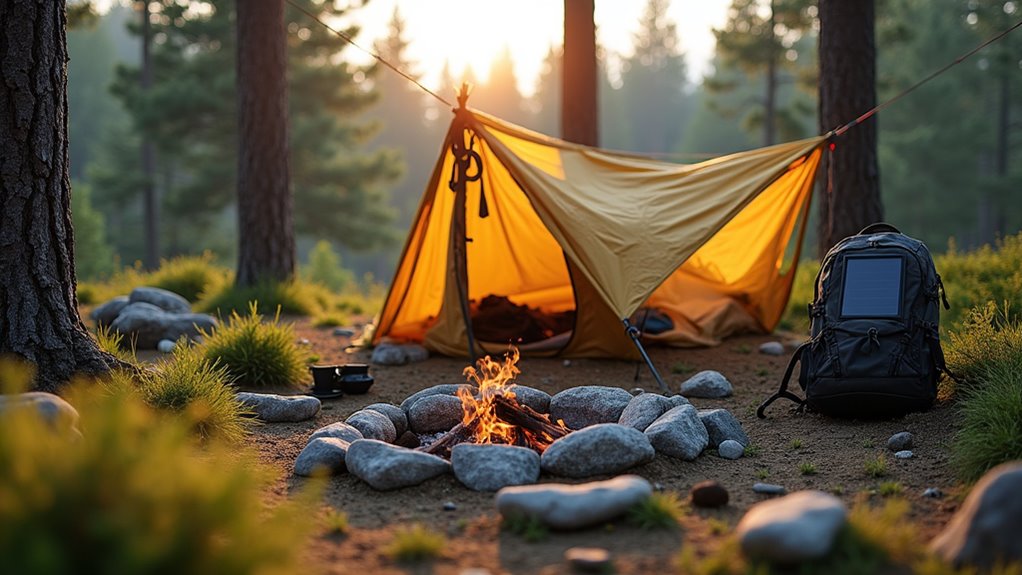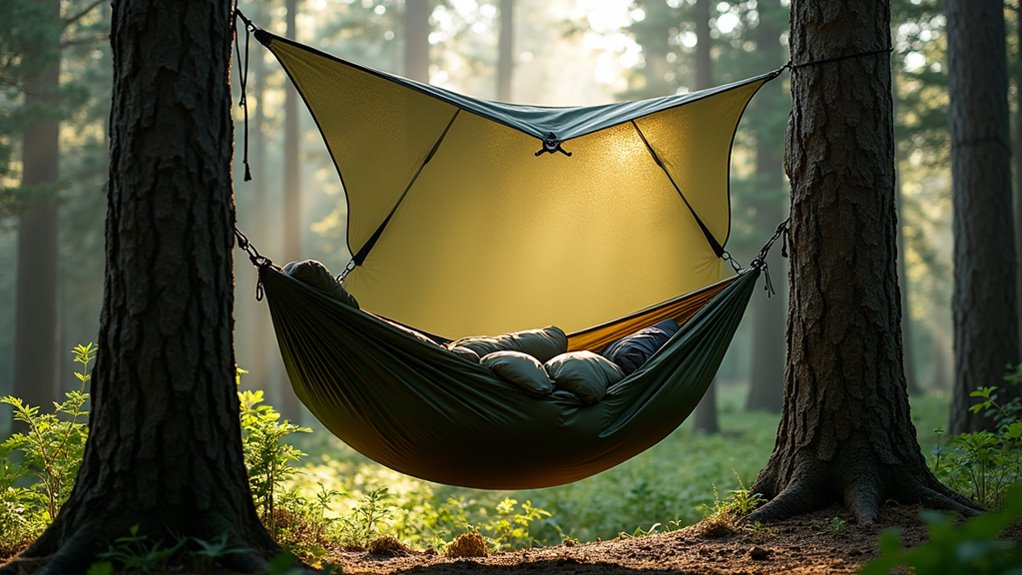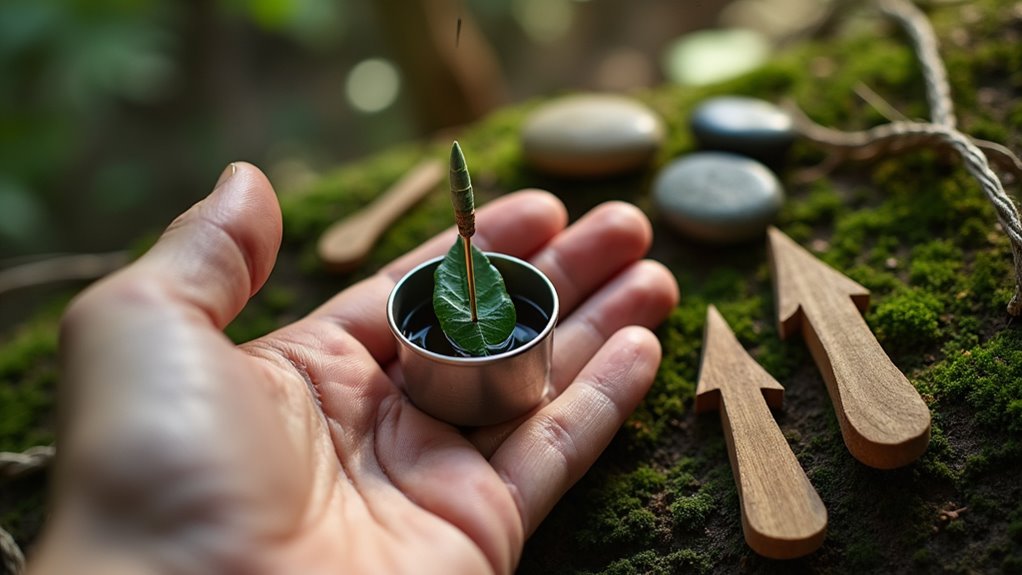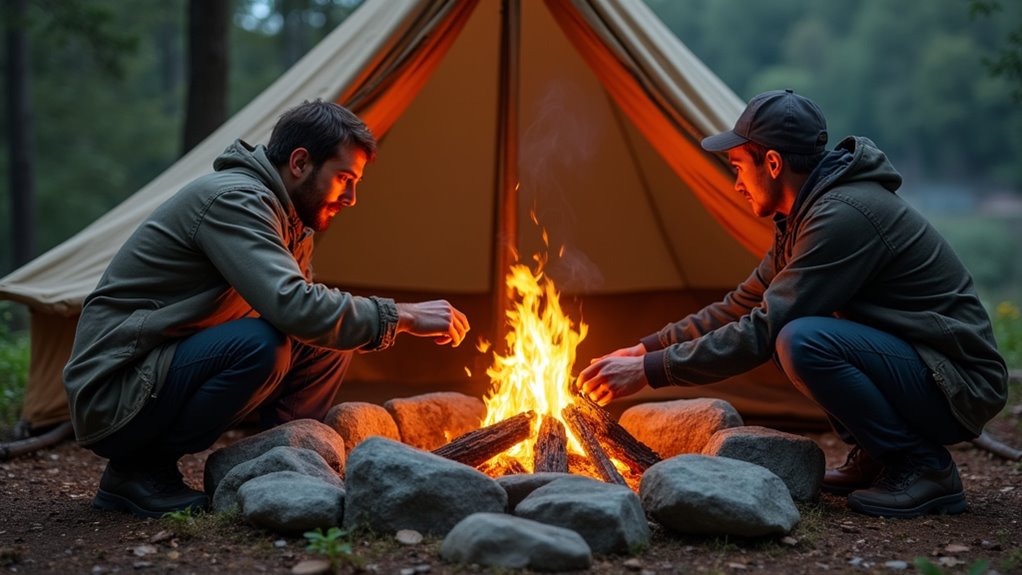Physical Address
304 North Cardinal St.
Dorchester Center, MA 02124
Physical Address
304 North Cardinal St.
Dorchester Center, MA 02124

Journey beyond basic camping with five game-changing wilderness techniques that will revolutionize your outdoor adventures and unlock hidden survival secrets.
You’ve mastered the basic campfire, you’ve conquered tent setup, and you’ve perfected s’mores – but there’s so much more to discover in the wilderness. These five advanced camping techniques will transform you from a weekend warrior into a true outdoor strategist. From sleeping suspended above the forest floor to cooking meals buried underground, these aren’t your typical camping tips. Each skill unleashes a new level of self-reliance that’ll change how you experience the wild.

When you’re tired of sleeping on rocky ground or dealing with soggy tent floors, a hammock shelter system offers the perfect solution for comfortable elevated camping.
Start by selecting two sturdy trees about 12-15 feet apart. Use tree-friendly straps instead of rope to protect bark and provide better grip.
Set your hammock at a 30-degree angle – not too tight or you’ll create an uncomfortable banana shape.
Add an underquilt or sleeping pad beneath for insulation, since cold air will chill your back.
Install a ridgeline above for hanging gear and supporting a tarp.
Your tarp should extend beyond the hammock’s ends for maximum weather protection.
Practice this setup at home first – you’ll sleep better knowing you’ve mastered the technique.
For optimal comfort, position yourself diagonally across the hammock rather than lying straight down the middle, as this diagonal sleeping position creates a flatter surface and reduces the curved shape that can cause discomfort.
Although modern camp stoves offer convenience, nothing beats the rich flavors and even heat distribution you’ll get from underground Dutch oven cooking.
You’ll need to dig a pit twice your Dutch oven’s width and eight inches deeper than its height. Line the bottom with flat rocks, then build a hardwood fire inside. Let it burn down to coals—this takes about an hour.
Remove half the coals and place your loaded Dutch oven in the pit. Shovel remaining coals on top of the lid, using the 3-to-1 ratio: three coals on top for every one underneath. Cover everything with dirt, leaving the lid handle exposed.
Most meals cook perfectly in 45-90 minutes using this ancient technique. Don’t forget to pack a reliable lantern to help you safely navigate around your cooking pit and prepare meals once darkness falls.

Getting lost in the wilderness becomes far less threatening once you’ve mastered creating navigation tools from natural materials around you.
You’ll find that a straight stick planted vertically creates an effective shadow compass. Mark the shadow’s tip, wait fifteen minutes, then mark it again. Draw a line between points – this runs east-west, with the first mark pointing west.
You can also craft a simple compass using a magnetized needle floated on water. Stroke a sewing needle against silk or your hair fifty times in one direction. Place it on a leaf floating in still water, and it’ll point north.
For nighttime navigation, locate Polaris using the Big Dipper’s pointer stars. These natural techniques ensure you’ll never truly be lost.
Before heading out, consider what camping style matches your navigation skill level and comfort with wilderness challenges.
Staying found in the wilderness is only half the battle – predicting weather changes keeps you safe and comfortable throughout your outdoor adventure. Your tarp becomes a multi-functional weather monitoring system with simple modifications.
Survival isn’t just about finding your way – it’s about reading nature’s signals to stay ahead of dangerous weather changes.
Tie colored ribbons or lightweight fabric strips to your tarp’s corners as wind direction indicators. They’ll show you which way the breeze is blowing and its approximate strength.
Attach a small water container to one corner – when it swings, you’re detecting air pressure changes that often signal incoming weather fronts.
Position your tarp at an angle to collect rainwater while observing cloud formations above.
Morning dew accumulation on the tarp’s surface indicates humidity levels. Heavy dew usually means clear weather ahead, while little to no dew suggests approaching storms.
Just like deciding whether to rent or buy a boat for fishing, choosing the right tarp setup depends on the length and specific needs of your camping adventure.

When you’re camping in cold conditions, a standard campfire wastes most of its heat by radiating warmth in all directions – including straight up into the sky.
You can dramatically increase heat efficiency by constructing a reflector wall behind your fire.
Build your reflector using logs, rocks, or even a tarp stretched between trees.
Position it 3-4 feet behind the fire pit at a slight inward angle.
This barrier redirects escaping heat back toward your campsite instead of letting it dissipate uselessly.
Stack green logs horizontally if available – they won’t burn easily and create an excellent reflective surface.
Rock walls work similarly but take more effort to construct.
The reflector essentially doubles your fire’s warming power while using the same amount of fuel.
For reliable fire starting in any weather conditions, consider investing in a quality blast match fire starter that works effectively across all environments.
You’ve now mastered five game-changing camping techniques that’ll transform your wilderness adventures. Here’s something remarkable: studies show that 78% of campers who learn wilderness skills report feeling substantially more confident and connected to nature. That’s not just camping—that’s true outdoor mastery. Next time you’re planning a trip, you won’t just be another camper relying on modern conveniences. You’ll be equipped with time-tested skills that turn any campsite into your comfortable, self-sufficient outdoor home.